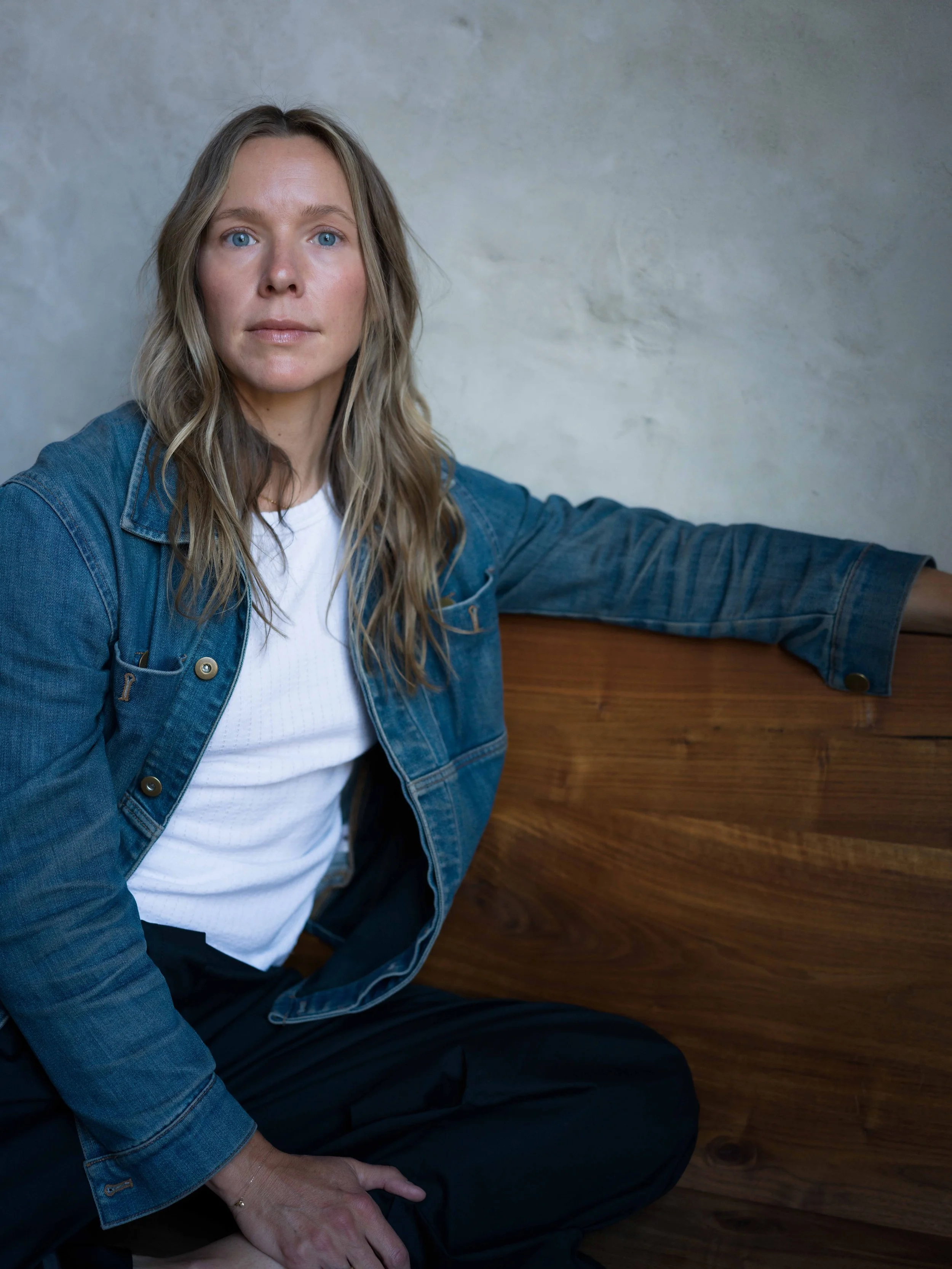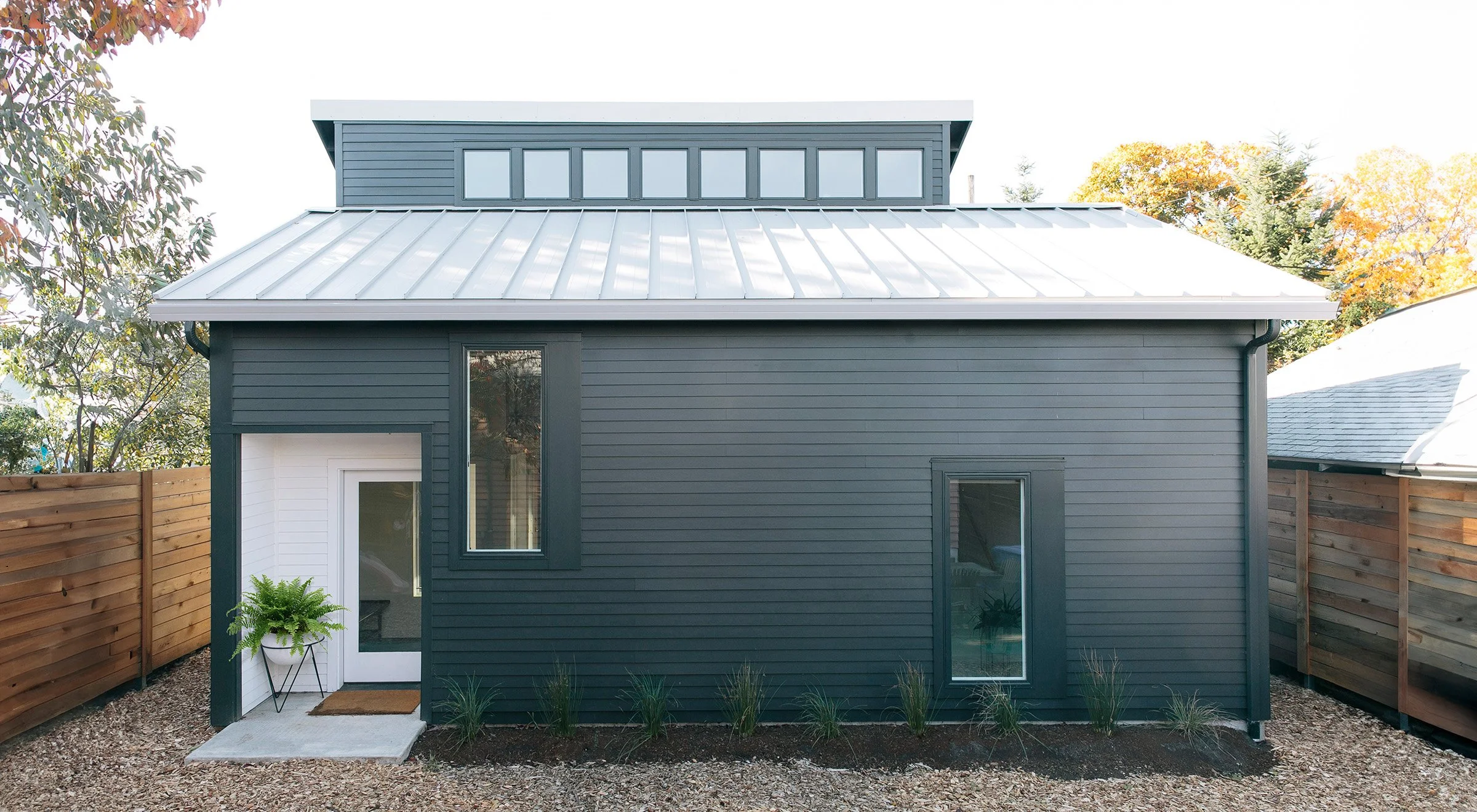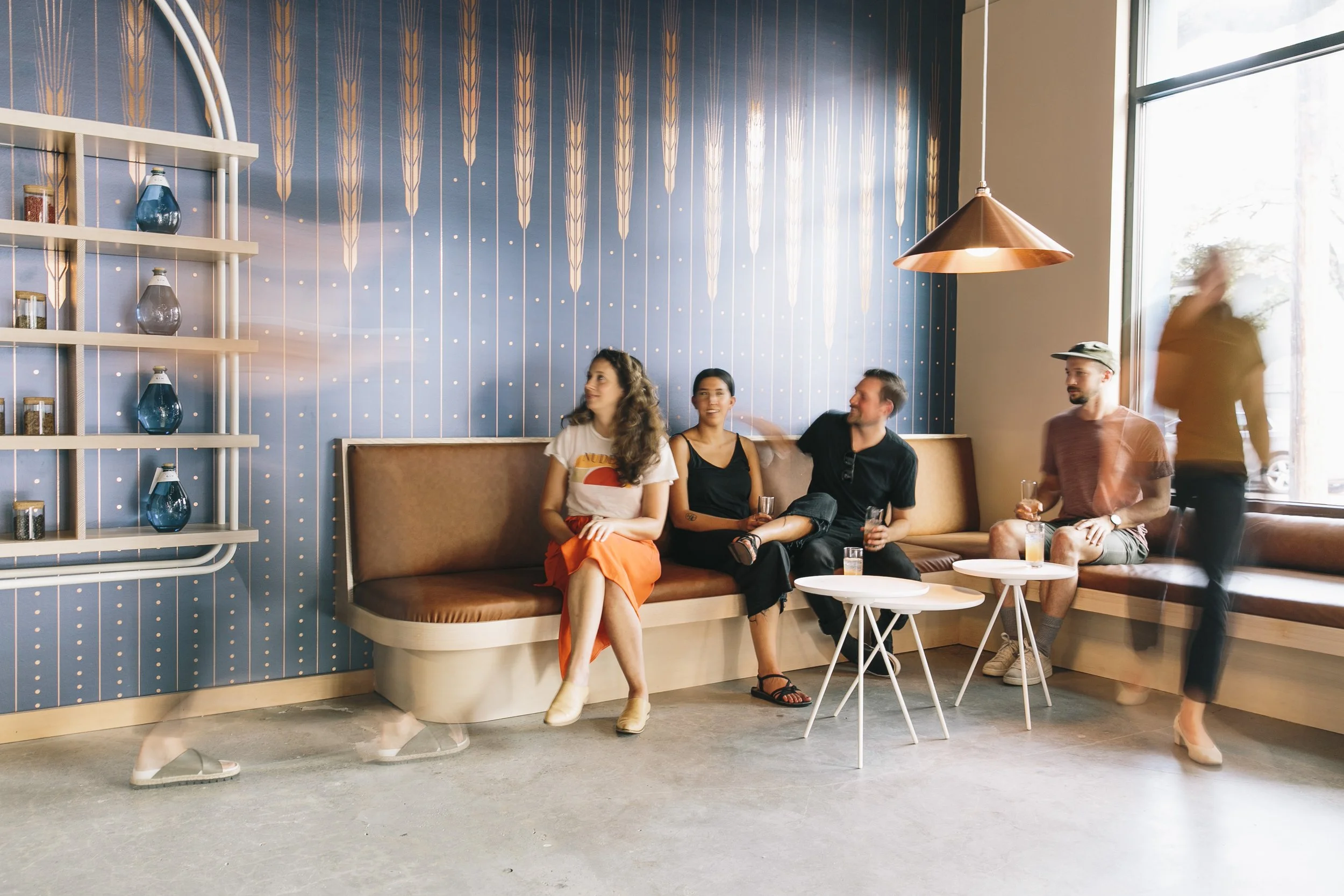Genuine Connections: Physical Space's Allison Bryan on Visual Conversations, Multidisciplinary Design, and Elevated Potential
Allison Bryan. Photography by Blair Speed.
By Julia Gamolina
Allison Bryan, AIA, is the founder and principal of Physical Space, an award-winning architecture and design studio dedicated to creating physical space for human connection. With more than twenty-four years of experience, she leads with a belief that design should challenge convention, nurture relationships, and elevate the everyday. Her work, featured in The New York Times and Dwell, reflects a commitment to beautiful, purposeful and connected place-making.
JG: What is the biggest problem you're trying to solve for with Physical Space these days?
AB: Right now, I’m most focused on developing my own leadership and creative practice so that I can be a better mentor to my team, uphold design excellence, and continue growing Physical Space nationally. I’d like Physical Space to function differently from the traditional, top-down architecture firms. We bring more junior designers into the conceptual design process early, allowing intuitive design talent to emerge and evolve in real time. I’m also focused on creating a healthier, more balanced culture, something that historically hasn’t been prioritized in our industry.
Day to day, I’m working on my own authenticity and leadership, building better systems, showing up more intentionally for my team and our clients, and carving out dedicated time for design. Running a business can easily consume the space meant for creative work, so I’m consciously protecting that time for myself and for the studio. My goal is to keep growing, but to do it differently, with clarity, creativity, and care.
Terrace Residence,. Photography by Bob Martus.
El Nido. Photography by Vic Garcia.
Going back a little bit, you first studied graphic design and then got your M.Arch. What were you hoping to do in the world, and what were your biggest takeaways from your time studying both?
Graphic design was my first love. I still love it, and it shows up in our work every day in the graphic nature of our projects. I also minored in sculpture in college, always wanting to apply a graphic sensibility to building in three dimensions.
All roads eventually led to architecture, where I felt I could make a bigger impact with my skill set. Graduate school at the University of Oregon was incredibly formative. The community there was deeply collaborative and grounded in values of sustainability, design thinking, and human connection. It taught me that architecture is not just about creating beautiful spaces, but also about creating a visual conversation to represent how we live. I learned that architecture can elevate our own individual potential and improve the lives of others.
What was some of the best advice you got early on that has informed your approach to your work and career?
When I was eighteen, I started doing display design for Urban Outfitters. My boss and early mentor gave me some advice that has stayed with me: learn to take a compliment. I was incredibly hard on myself and always striving for perfection, so it was difficult for me to pause and recognize what I had accomplished. That advice has stayed with me throughout my career, and honestly, it is still something I have to remind myself of today.
At that time, I was also deciding whether to stay in the Midwest and continue at Urban Outfitters or start a furniture design business, but my grandfather encouraged me to pursue architecture instead, knowing that once I had my master’s degree, I could still design and build furniture if I chose to. That decision completely changed the course of my life and opened up a new way of seeing how creativity could shape the world around me.
“My personal mission is to create spaces that allow people to reconnect with themselves, with others, and with their environments. I believe that if we can design places that foster genuine connection, we can make a real difference in the growing mental and physical health crisis.”
Tell me about your professional experiences before starting Physical Space. What were some of the big takeaways from each step?
Working at Urban Outfitters as a display designer at eighteen was incredibly formative for me. I carried it through my early twenties, prototyping displays across the country. It was completely normal for me to have a sheet of plywood on my back and a tool belt around my waist. That experience taught me how things go together, how to problem-solve in real time, and how creativity can thrive in a collaborative and supportive environment.
After graduate school at the University of Oregon, I went on to work for CLB Architects, where I learned the power of continually pushing for design excellence and the importance of place as inspiration. From there, I joined Nike, where I focused on North America and Global retail design. At Nike, I learned how to tell the story of a brand through space, how to communicate ideas at scale, and how innovation can drive every decision. It also opened my eyes to the complexity of working within a large corporation and the importance of equity and representation in leadership.
More than anything, my previous experiences have taught me that design is storytelling. Whether we are creating a global retail flagship or a private home, every project begins with understanding who it is for, how they want to live, and what story the space will tell.
Tell me now about starting your own practice. Why and why then?
I started my own practice, originally called Open Studio Collective, after my daughter was born and while I was working at Nike. At the time, I was getting freelance inquiries and saw an opportunity to take on a few projects while spending more time with her. What began as a small step toward flexibility quickly grew. Within a year or two, I had my own clients, a team, and a rhythm that felt both creative and expansive.
I had always been interested in multidisciplinary design, and my previous roles didn’t allow for that kind of exploration. Starting my own practice gave me the freedom to work across architecture, interiors, brand, and experience design. After several years of growth, I was getting my license and managing a fast-paced studio, but I was also feeling the early signs of burnout. That led me to take a position back with CLB, helping to run their office in Montana. It is an excellent firm and was a grounding experience, but it also reaffirmed my desire to build something of my own and express my work fully on my own terms. I reopened OSC in the spring of 2021. This year, we rebranded Open Studio Collective to Physical Space. The new name reflects not only the work we do but also why we do it—to create physical space for human connection.
Forest Bath. Photography by Kaitlin Green.
Lowell Residence. Photography by Kaitlin Green.
Looking back at it all, what have been the biggest challenges? How did you both manage through perceived disappointments or setbacks?
There are still challenges every day ranging from design problems, being over-scheduled, client management, employee needs and beyond. I am working on getting better with dealing with setbacks and challenges and my own reactivity. The longer I’ve done this work, the more comfortable I am with taking risks within the studio, financially and in projects. I just have a deep belief that it will all work out the way it is supposed to.
Who were your mentors through it all?
I’ve been really fortunate to have had some incredible mentors throughout my career, especially as I didn’t have an idyllic childhood. I grew up in a household with addiction and no real mother figure. When I first started my business, I didn’t really have mentors because I went off on my own early, and I didn’t know where to look. Over time, I’ve built a national network of mentors and peers who continue to challenge and support me. That community has become an essential part of my growth.
At Urban Outfitters, I had two mentors who made a lasting impact: Justine Lauber, who gave me my first break as a display artist; and Sue Otto, who encouraged me to pursue architecture school. At CLB, all of the partners were mentors to me in different ways. They taught me about design excellence, the discipline behind great architecture, marketing and how to understand the business side of the work.
My stepmother, Laura, is a strong female leader in the field of academia, has also been an incredible sounding board and example of perseverance and clarity. My late grandfather encouraged me to take risks and to push through adversity. More recently, I’ve worked with an executive coach, Keren Eldad, who has helped me grow tremendously as a leader.
“Starting your career or business will always come with highs and lows, and that doesn’t really change as you grow. The key is to keep creating, stay curious, and continue believing in yourself, even when things feel uncertain.”
Who are you admiring now and why?
I am really inspired by people who are doing thoughtful, grounded work that balances creativity with impact. One of my closest friends, Kaarin Knudsen, an architect who is also the Mayor of Eugene, Oregon, published The Handbook of Sustainable Design last year. She continues to inspire me through both her friendship and her leadership, showing how design thinking can shape communities and policy in meaningful ways.
Another one of my peers whom I greatly admire is Chris Brown of Observation Studio. We came up around the same time and share roots in the Portland school of design. There are many Portland firms that continue to influence me, and that culture of curiosity and collaboration has shaped how I think about practice. My graduate school class at the University of Oregon was very strong and I find all of my classmates to be very inspiring and great sounding boards — many of us keep in touch.
Finally, I have always looked up to the female greats in our field, including Alison Brooks, Jeanne Gang, Annabelle Selldorf and Faye Toogood among many others. Each of them has redefined what it means to lead with both strength and sensitivity.
Freeland. Photography by Vic Garcia.
Nike HQ Tokyo. Courtesy of Nike.
What is the impact you’d like to have on the world? What is your core mission? And, what does success in that look like to you?
I have a post-it note on my mirror that I see every morning, it is my why and reads…“WHY: to create space for human connection and elevated potential.” My personal mission is to create spaces that allow people to reconnect with themselves, with others, and with their environments. I believe that if we can design places that foster genuine connection, we can make a real difference in the growing mental and physical health crisis.
I host a series entitled “Physical Education” quarterly at our office. It is a conversation where we bring in an inspiring community member and we discuss the intersection of design, community and mind-body resilience. When I asked myself how the studio could give back in the current climate, it felt like an obvious platform to bring people together and connect, and share inspiring stories.
Equally important to me is mentoring young women who are new to the field or starting their own businesses. When I started out, I didn’t have many examples of women doing this work on their own terms, and I want to help change that. I love sharing what I’ve learned and helping women navigate leadership, creativity, and the challenges of running a business while staying true to themselves. Mostly, I want to show my daughter, Ada, that she can do whatever she dreams of doing in her own life. I want her to see what it looks like to be a woman who leads with strength, creativity, and compassion. If I can do that, then I will feel like I’ve succeeded.
Allison Bryan On-Site with Daughter. Photography by Claudia Von Flotow.
Finally, what advice do you have for those starting their career? Would your advice be any different for women?
There is never a perfect time to take the leap, so just do it. Starting your career or business will always come with highs and lows, and that doesn’t really change as you grow. The key is to keep creating, stay curious, and continue believing in yourself, even when things feel uncertain.
Many times you may find yourself as the only woman at the table. I’ve been in that position often, and I have learned to see it as a superpower rather than something that sets me apart. Own that space with confidence. Your perspective and your presence matter deeply, and they can shape the culture around you more than you may realize at the time.
For the men, I would say don’t be so hard on yourselves. Stay light, stay collaborative, and remember that relying on your team does not make you less capable or strong. The best leaders, regardless of gender, are those that lead with openness, trust, and empathy.
This interview has been edited and condensed for clarity.







